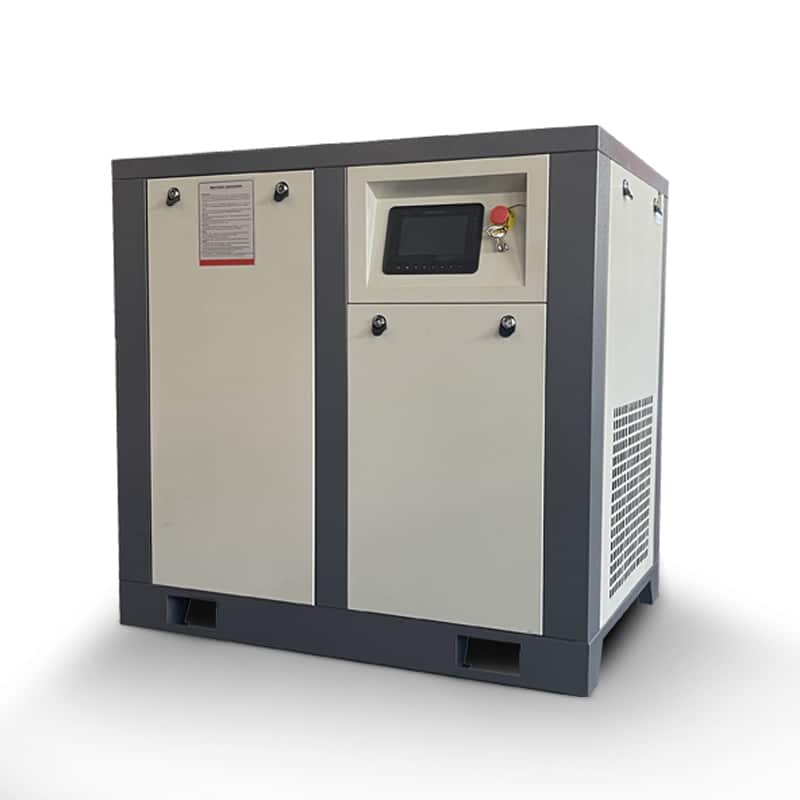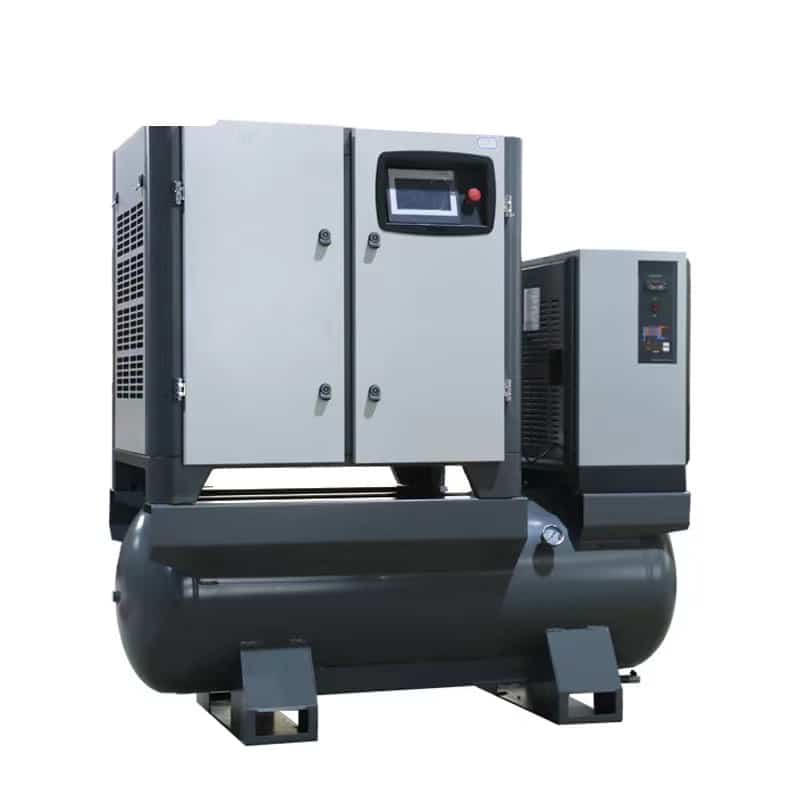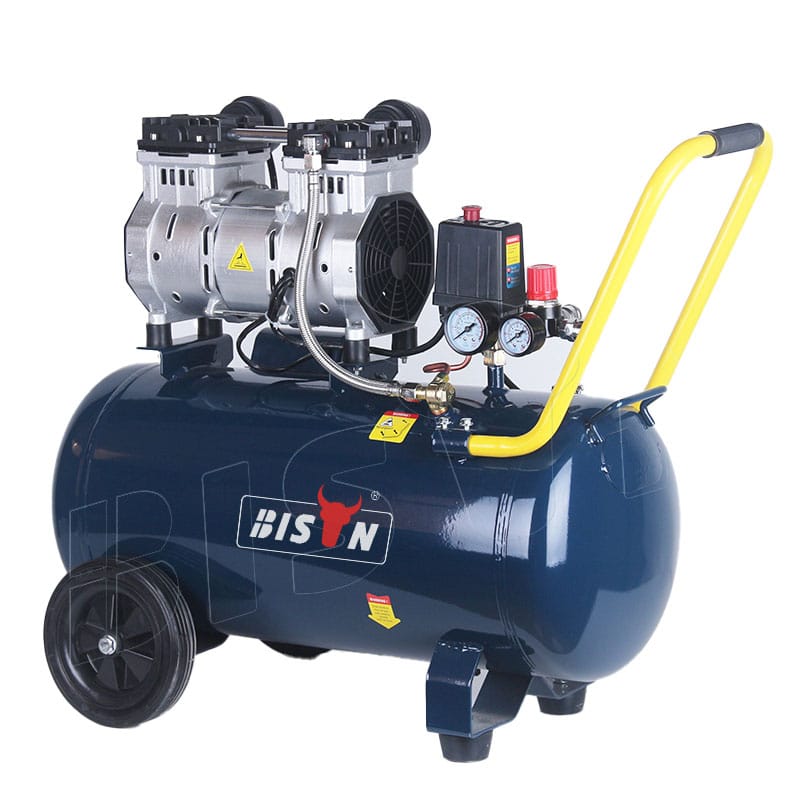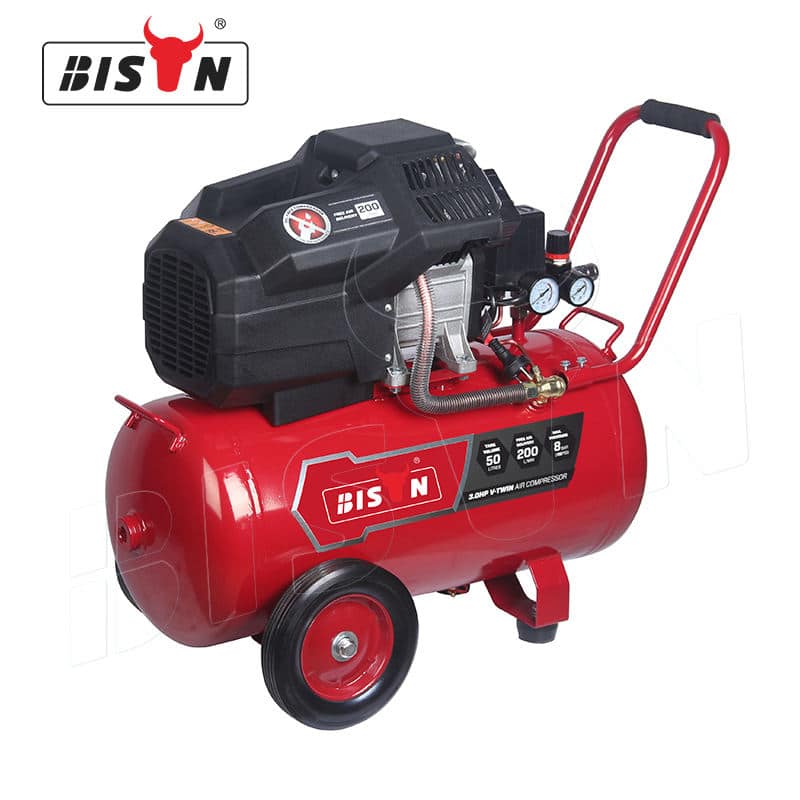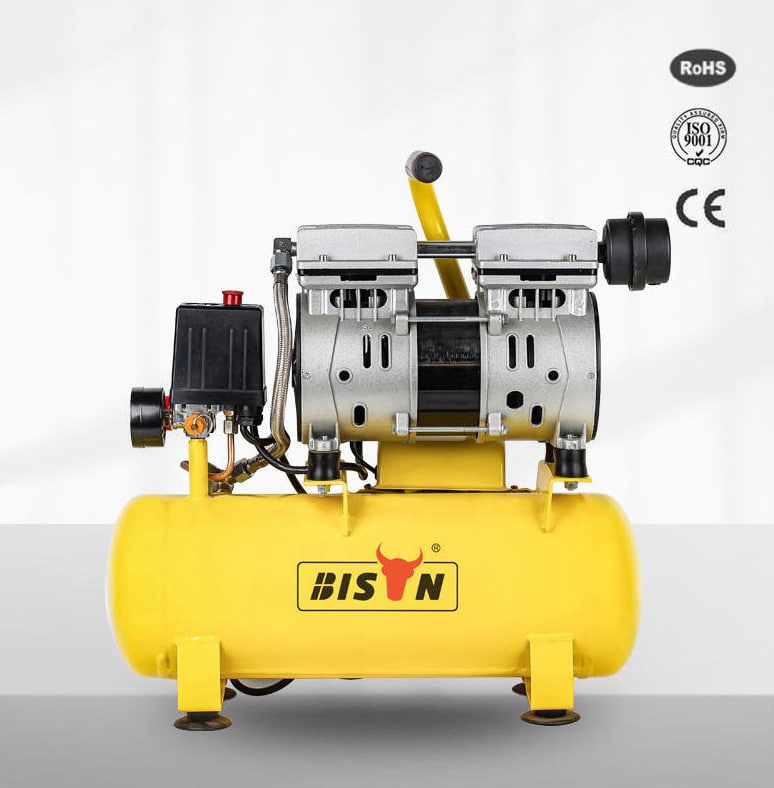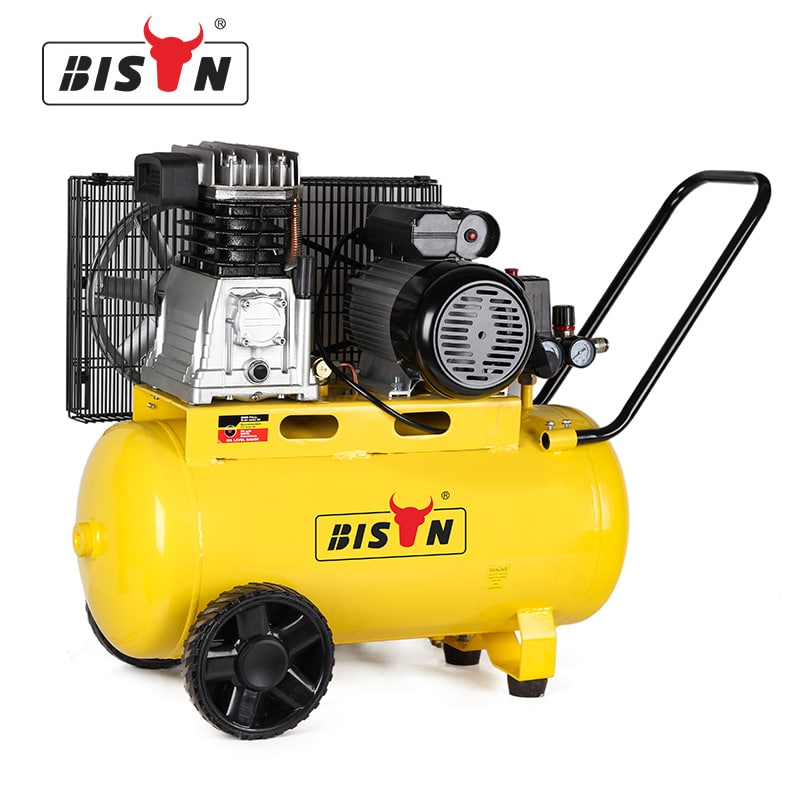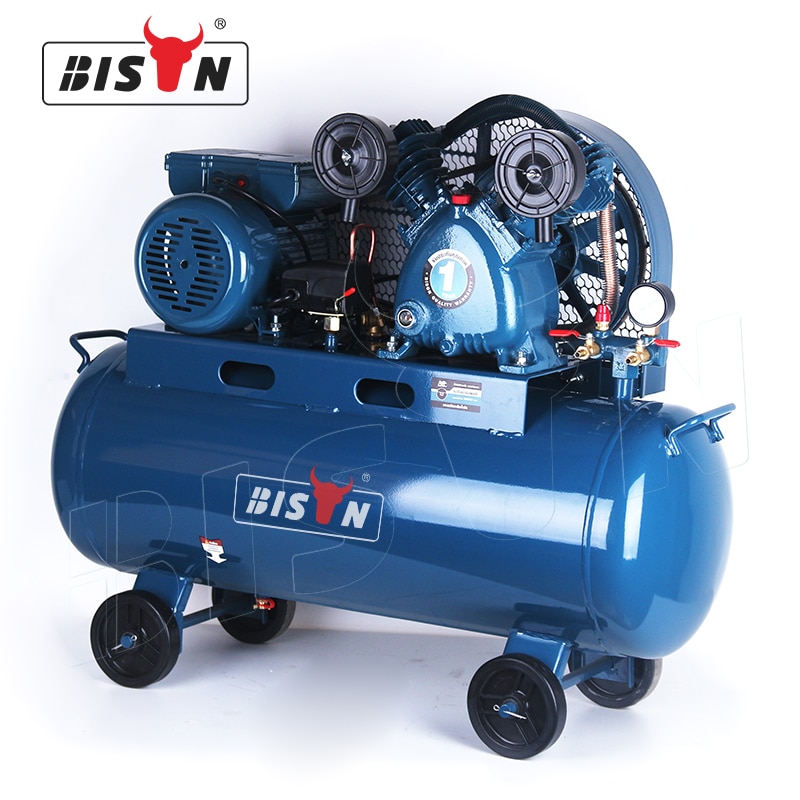air compressor blog
Can you lay an air compressor on its side?
- Jan 30, 2024
Air compressors serve multiple purposes. For this reason, you may need to move it around. In some cases, moving only sometimes in a straight location is only occasionally possible. The thought of moving the unit can make you nervous. Can I put my air compressor on its side?
How does an air compressor work?
Knowing how your machine works is essential to learning how to properly care for and use it. Knowing what parts it contains and how they work can also help you get used to your air compressor and know when something isn’t right.
An electric pump forces air into the tank: Air compressors have an electric motor connected to a pump. This electric pump takes air and pumps it under pressure into the tank.
A gauge on the tank: A gauge on the side of the tech tells how much pressure is in the tank. This gauge measures pounds per square inch. For example, your tank may read 100 psi.
Second gauge reading: The dual gauge is found where the air leaves the tank. This gauge shows us what pressure is coming out of the tank and goes through a tube to the device that one is using. This gauge can be regulated by turning the regular knob, which is usually found on top of the indicator. The standard button can be moved up and down depending on the pressure the tool needs.
Tool PSI rating: Each tool has a different PSI rating, depending on how much forced air is required to power the device.
Size of air compressor: The size of the air compressor is essential for its application. They are made in gallons. For example, you can purchase a small 1-gallon air compressor for portable use. You can also purchase dual tanks, up to 200-gallon tanks for industrial use.
Can you put your air compressor on its side?
Whether or not you can put your air compressor on the side depends on several factors. Therefore, the answer to this question is not as simple as yes or no.
Laying a new air compressor on its side
Upon purchasing a new air compressor, side loading is not a problem. This is because the compressed air unit has never been used before.
There is no oil in it. The tank is also free of water condensate. So when you lay on its side, there’s no gun rolling around and getting into places it shouldn’t.
So what if the air compressor isn’t brand new?
Carrying around a used compressed air unit differs significantly from carrying around a new one. There are a few things you should consider first.
As the air compressor draws air into the tank, it also sucks in water vapor and airborne particles. These things accumulate in the tank over time.
You can often use a drainage system on your compressed air unit. But still, you can only get rid of some of the stuff that builds up inside it with every use. Some of it remains.
The remaining sludge is displaced when you turn the used air compressor on its side. It moves around and can go places you don’t want it to go.
Tank check valve
One of the places you want to avoid building a house with mud is in the tank’s check valve.
Air compressors have a line that goes from the pump to the tank. This is where you will find the check valve. If it gets muddy, a few things can happen.
Your compressed air unit may be leaking.
This leak will persist, and your air compressor will perform less efficiently.
You may have back pressure buildup. An increase in back pressure buildup can cause some problems.
1) This can overload the motor.
2) The motor will overheat.
3) It may start humming.
4) You may not be able to start the air compressor.
Drain tank
Sludge can also get into the compressed air unit’s drain tank. Once it gets there, it will stop it. If this happens, you can remove the tank once you unscrew it.
Let’s break it down a little more
Some air compressors use oil as a lubricant, and others do not. Those not labeled for a lifetime.
Although these air compressors do not use oil, they still have tanks carrying the air. Air carries with it dirt particles, water vapor, and other substances. These particles combine and form over time, creating the sludge mentioned above.
Placing an oil-lubricated air compressor on its side
Oil-lubricated compressors require oil to function correctly. When you put it on the side, that oil will move around. It then ends up in places you don’t want it to go. And, like water, it can cause your compressed air unit to malfunction.
Can you put a used air compressor on its side?
With repeated use, your air compressor builds up condensation and dirt on the inside. This will go to the bottom of the compressor tank, becoming dirty gunk or sludge.
Putting a used upright air compressor on its side can be risky. Mud will be free to move around the tank in this position, potentially causing
Sludge can reduce valve movement or prevent it from moving altogether. damage to your compressor’s vital components, particularly the tank check valve. Numerous other issues can also arise from moving fluid. In summary, you do not want to try driving a used ical computer.
Can you put an oil-lubricated air compressor on its side?
Air compressors are configured to be oil-lubricated or oil-free. Oil-lubricated compressors require customers to add oil to the sump after purchase manually.
However, this feature has a caveat – you should not place an oil-lubricated compressor on its side after adding oil to the sump. Doing so allows oil from the sump, usually mixed with some dirt, to flow into unwanted areas. And as you may already know, getting dirty oil in certain areas can kill an engine.
Can you put an oil-free air compressor on its side?
Unlike the oil-lubricated type, an oil-free air compressor is designed to require oil lubrication. Therefore, it is pretty safe to direct the air compressor directly without oil.
The only caution with this is to ensure the compressor does not get wet. It’s best not to place a vertical compressor on its side without used oil, as there is a high chance of moisture accumulating in the compressor already.
Straight compressor
a) Use the ramp to load the compressor
It will be simpler to lift the air compressor into a pickup truck if you use a ramp. This will also make it easier to remove. Consider carefully pushing the compressor up the ramp with a hand truck or furniture dolly.
b) Secure your upright air compressor
Air compressors must be secured appropriately, no matter how you transport them. Vertical compressors that move vertically are usually the heaviest. Any slight tipping will cause them to slide downward, damaging the compressor and risking damage to the vehicle.
You should install upright air compressors on a pallet, which promises extra stability. Thankfully, some compressors come in bolts on pallets.
Once you’ve got the compressor in the truck and positioned it as needed, don’t lower it with four heavy-duty ratchet straps. Straps must be attached to all four corners of the truck bed and must be firmly attached.
c) Consider disassembling the air compressor
If you prefer to move your air compressor straight to it, it’s safer to disassemble it. This will prevent any oil-related accidents from happening. Naturally, before moving the pump, you should still drain the oil from it.
Will maintenance help?
It is a wise idea to clean your air compressor thoroughly every year. And you should check for proper maintenance in between.
You should exercise even greater caution if you are forced to use your air compressor on its side. As often as possible, give your compressed air unit a cleaning and maintenance.
What if you cut off the oil and water system? Wouldn’t that make it safer to lay it on its side?
While this may eliminate most of the fluids in your compressed air, some units will be left behind. It is impossible to remove all the residue, mud, and dirt.
When you turn the system on its side, whatever is left behind will move around because it’s liquid. Some people recommend leaving the tank open. When you do this, the water left inside may dry out.
But if you do, remember to put the cap back on when you use the air compressor again. But more is needed to solve the oil problem. Extracting water alone is not enough.
Some other cleaning options
Here are some other cleaning options:
1) Keep the intake vent clean
2) Keep the hose clean
3) Keep the air filter clean
4) Other maintenance
5) Both dirt and oil are gathered by these components of your compressed air unit. Cleaning them periodically helps to lessen this accumulation. So if you put your air compressor on the side, there will be less mud to move around in the machine.
6) The last thing you will say on this topic is that air compressors are heavy. To move it around and keep it on its side, you may need help. And when you get it into your car, make sure you strap it in place.
Conclusion
Locating your compressed air system is a choice every owner has to make. Although it’s a risky practice, no law says you can’t do it.
While some air compressors may be placed on their sides, it is essential to consult the manufacturer’s guidelines and specifications to ensure safe operation. Each compressor’s design and internal components may vary, affecting its ability to function correctly horizontally. Factors such as oil lubrication, potential leaks, and motor functionality must be considered to prevent damage and maintain optimal performance. Always prioritize safety and follow the recommended guide.
A common mistake people make is to confuse the number of pistons with the number of compressor stages. The designation of single-stage and two-stage compressors is independent of the number of pistons. For example, a single-stage compressor can have one, two, or even three pistons. These terms only describe the process used to compress the air.
frequently asked questions about Can you lay an air compressor on its side?
Can you place a vertical air compressor on its side?
No, it would help if you did not place an air compressor vertically on its side. Most compressors are designed to be used upright, and placing them on their side can damage certain parts, such as the compressor pump.
What is a vertical air compressor?
An air compressor with a vertical tank design is called a vertical air compressor. These compressors are perfect for usage in cramped areas or places with little flooring.
What distinguishes a horizontal air compressor from a vertical air compressor?
The primary distinction between a horizontal and vertical air compressor is the orientation of the tank. Horizontal compressors have a tank that is level with the ground, whereas vertical compressors have an upright tank design.
Can you use an old or second-hand air compressor?
It is possible to use an old or used air compressor, but it needs to be properly inspected first. Inspect the air tank check valve for proper operation and look for any indications of wear or damage. In addition, if the oil appears old or dirty, you might want to replace it.
How often should you change the oil in your vertical air compressor?
Based on how frequently you use the machine and the manufacturer's recommendations. It's generally a good idea to change the oil every 500–1000 hours of use, or at least once a year.
If you have any enquiries about the BISON air compressor, we would love to hear from you.

